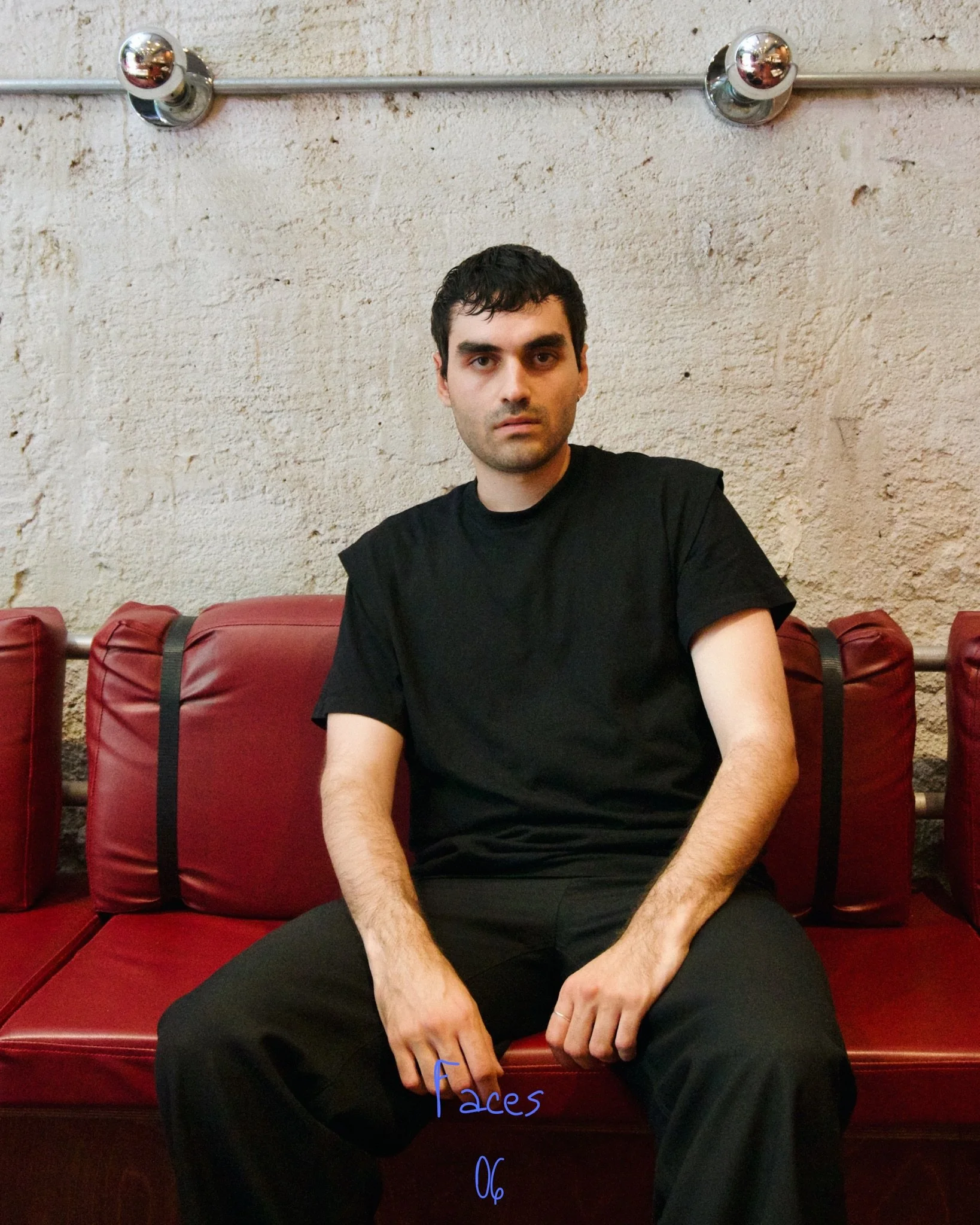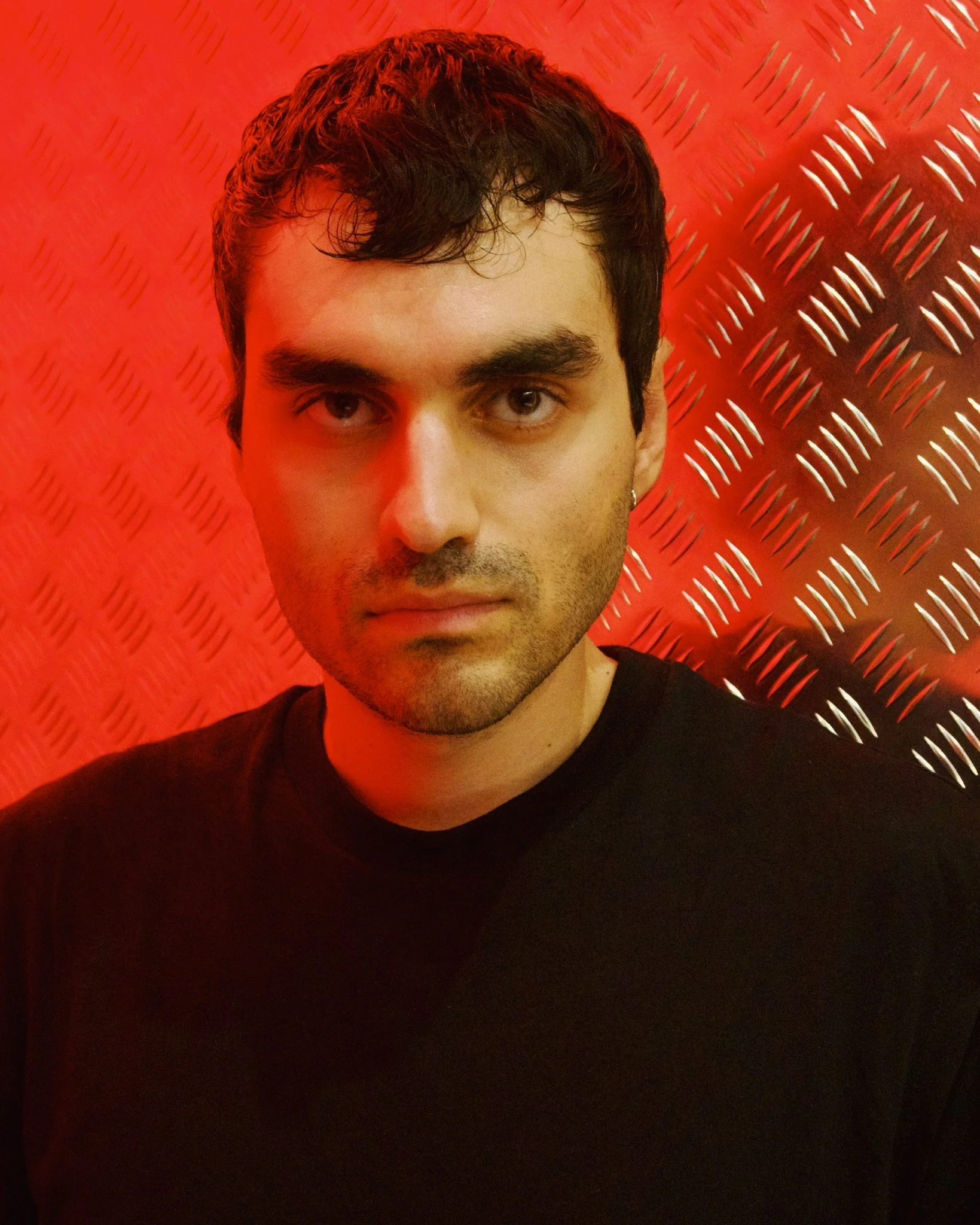06 // George Vlasis Pakalidis
art & business
George Vlasis Pakalidis is an Architect, Lead Designer and a Creative. His work moves at the crossroads of architecture, art, design, fashion and new media - where structure meets emotion and technology becomes a tool for storytelling. Born in Greece and based in Copenhagen, his practice explores the emotional potential of space, balancing critical thought with aesthetic intuition. For him, design is less about control and more about conversation - between materials, light, sound, and the people who inhabit his spaces.
At 3XN Architects, his work spans projects such as the Grand Hyatt Extension in Athens, shaping environments that merge functionality with expression internationally.
Beyond the studio, his design practice extends to the Berlin Biennale for Contemporary Art, De Appel in Amsterdam, the Gothenburg International Biennial for Contemporary Art, and Rains’ Home Away collection launch for Copenhagen fashion week. In the past, he co-founded the creative research collective Contextual Mumbling, an experimental platform exploring geometry, texture, and context through new media and art installation.
In Greece, his creative footprint and architectural journey continues through Voulkanizater Athens, Dr.8 (Dreight) and soon September18, in collaboration with @art__val - all projects reflect his ongoing dialogue between structure and spontaneity. Across every medium, George’s work invites viewers to experience space as something living - a meeting point of matter, culture, and emotion..
Your work often merges architecture, design, and new media. What draws you to this intersection, and how do you navigate the creative overlaps between these different languages?
I have always been passionate about the spaces between disciplines, where the arts, architecture, fashion and design, blend and merge in order to generate new meanings and potentials. Each one of these disciplines have their own methods and ways of thinking. It is less about compromising but more about translating and morphing each, into something else, allowing these intersections materialise in new forms of communicating ideas, spaces, visuals that speak to the audience in a strong way.
In my day-to-day work flow, advanced digital tools and emerging technologies play an important role in this process, but I see them as mediums rather than drivers. They allow me to expand, test, experiment, and refine concepts, but they always follow the idea, they do not dictate it. In the end, what matters is creating work that resonates culturally and emotionally with its audience and your own values, while leaving space for experimentation and the unexpected.
Having been part of artist-led spaces, how has collective practice shaped the way you understand community in design?
Collective practice taught me that design is never a solitary act, it always ‘takes a village’. It’s a non-stop conversation with people, context, culture, and current political circumstances in the current moment we live in. In these spaces, hierarchies, titles, backgrounds dissolve and what emerges is a kind of shared authorship and a hunger to create together. In the times we live in, the community spaces are becoming more important than ever as a powerful window of speaking up the truth through art and design. This process has really shaped the way I perceive the meaning of community, not as an audience to design for but as a connection of co-creators of sharing ideas and experiences.
“The way I perceive the meaning of community, it’s not an audience to design for, but rather a connection of co-creators of sharing ideas and experiences.”
As someone working in both built and digital environments and conceptual installations, how does context shape your design process? Does your approach shift depending on the scale or medium?
Context is always the starting point of my creative practice, regardless of whether it is a building, a room, a digital space, or a temporary set. What changes is the scale of influence. Context carries social and cultural weight, and it demands sensibility and responsibility. In some cases, context can become something more abstract or often more immediate and sensorial that allows me to be more experimental. At other times, it provides meaning, direction, but it can also set boundaries, which can be an obstacle to the creative process. My approach can often shift depending on the unique characteristics of each project, but the core narrative remains. Every project at any scale is about creating a dialogue between the physical, the digital, the form, the content and the world around it.
What role do aesthetics play in your process? Do you see beauty as an outcome embedded deeper - in tension, contradiction, or structure?
Aesthetics is deeply rooted in my practice and inseparable from my thinking about design, both as a visual and critical tool. They are not an add-on layer but part of the whole creative process and the idea itself. Beauty for me is not stereotypical, and it cannot only be found in harmony but also in tension, contradiction, and even disruption. That is what often makes a work resonate with me at a deeper level. Growing up in the countryside and in a highly industrialised area while being a creative kid, I was always trying to find beauty and art around me in the most abstract ways possible, usually as a coping mechanism, which is something that really broadened the spectrum of what beauty means to me.
In an era where we are constantly hoarding aesthetics through multiple digital platforms, and where endless visual tools are available to us, it can be challenging to stay both unaffected and relevant. For me, the idea of purity is crucial as a way to reimagine and reveal new expressions that move beyond stereotypes. I see beauty and aesthetics not as a polished outcome but as the precise moment when concept, culture, context, and experimentation align.
“I see beauty and aesthetics not as a polished outcome but as the precise moment when concept, culture, context, and experimentation align.”
Has there been a piece of architecture or art that made you feel something you couldn’t explain in words? What was it, and what stayed with you?
If I should highlight one of my latest experiences, it would be Delcy Morelo’s exhibition El abrazo at Dia Chelsea in New York. Walking into her earthen environments, the soil, scent, and scale created an overwhelming physical presence. What struck me the most was how light and acoustics shaped the atmosphere, which felt dimmed down, resonant, almost subterranean. It felt as if the earth itself was breathing around you. What stayed with me was that profound sense of being absorbed into matter, where architecture, body, and landscape become inseparable.
Another experience that stayed with me was Berl-Berl by LAS at Berghain in Berlin during the pandemic. The space was transformed into a digital swamp with screens, mist, and soundscapes of Arca’s voice–one of my favorite artists and inspirations–it almost felt otherworldly.
Can you recall a turning point in your creative journey - a conversation, a challenge, or even a small failure - when your approach to design fundamentally changed?
I wouldn’t describe my creative journey as having a single turning point but rather as a smooth transition from one stage to the next. Along the way, I’ve been fortunate to meet, befriend and collaborate with brilliant, talented people who have inspired me, challenged me, and encouraged me to broaden my creative narrative.
If I had to define a turning point, it would be realising that failure is an inherent part of experimentation. Early in my creative journey, I often struggled when projects that didn’t get resolved or didn’t resonate with me in the way that I had imagined them to. Over time, I began to see those “failures” as necessary steps in shaping my vision. That shift freed me from the shackles of an idealised creative process and allowed me to take more risks, explore unconventional directions, and ultimately build a practice that values exploration as much as outcome.
In your view, how has living and creating in Copenhagen redefined your relationship with space, climate, or collaboration? What do you carry with you from Greece, and what have you embraced anew?
Living and creating in Copenhagen for the last seven and a half years has made me more aware of design as a collective responsibility. The city embeds collaboration, sustainability, high-end design, and social awareness into everyday practice, and that has influenced the way that I approach architecture and conceptual work, both in a moral and aesthetic way.
Copenhagen is also a creative hot spot that attracts talent from across the world, and this exchange with other international creatives brings me constant inspiration. Beyond its polished surface, the city includes a vibrant underground art and music scene that feels raw, experimental, and uncompromising. That duality between refinement and underground energy keeps the city alive creatively.
From my Greek roots, I carry a raw intensity, passion and a deep drive that comes from growing up in a country of contrasts. This intensity, combined with the city’s culture of dialogue and experimentation, creates a balance in my practice, rooted in context yet always pushing for something more daring, poetic, and unconventional.
What does “home” mean to you? Is it a place, a material, a texture - or something less tangible?
For me, “home” is less of a place and more of a feeling of belonging. I remember my mother often saying to me while I was growing up: “όπου γη και πατρίς”, which I’ve come to understand as “the world is your oyster.” This expression has shaped how I think about home from an early age, not as a fixed location but as a state of being.
Home is the feeling of resonance, when your surroundings align with your inner world, the warmth that comes from within yourself. It can be your family, your chosen family, your close friends, a favorite song, a familiar sweater, or simply a hug. In that sense, home is something you carry, reconstruct, or reinvent wherever you are.
“Home is the feeling of resonance, when your surroundings align with your inner world, the warmth that comes from within yourself.”
What’s your relationship with time when you’re creating? Do you lose it, fight it, stretch it - or design alongside it?
Time is both my friend and my enemy, it gives me freedom and structure when I am in a creative process. When I lose track of time, which I (un)fortunately do so often, I know that I am fully immersed. Some projects demand urgency, and others demand patience and time. Free time can be therapeutic, a reminder that creativity also needs pauses and that it’s good to know when to stop, a healthy balance is key. It’s important to let ideas breathe and evolve. For me, time is fluid, it is something I move with rather than control.
If you could create something with no risk of failure - no limits - what would you pour yourself into? What world would you build, just because it matters to you?
A world where Palestine is free. A world where no one is limited by borders, oppression, or injustice but rather is shaped by freedom, dignity, and the possibility of dreaming.
If you could speak to yourself at 17, just before your architectural journey began, what would you want to say - or ask?
I don’t think I would speak to my past self, it would only make him more stressed. He is already on the right path, with all its ups and downs, and I know that he will make the right choices and make the right decisions for him. Knowing what’s coming can take away the magic of the unknown, as well as the strength you find in yourself when you push toward your goals. At that age, what mattered and what I was holding on to was the ability to dream of what’s coming.
shot by Vas Thalis



